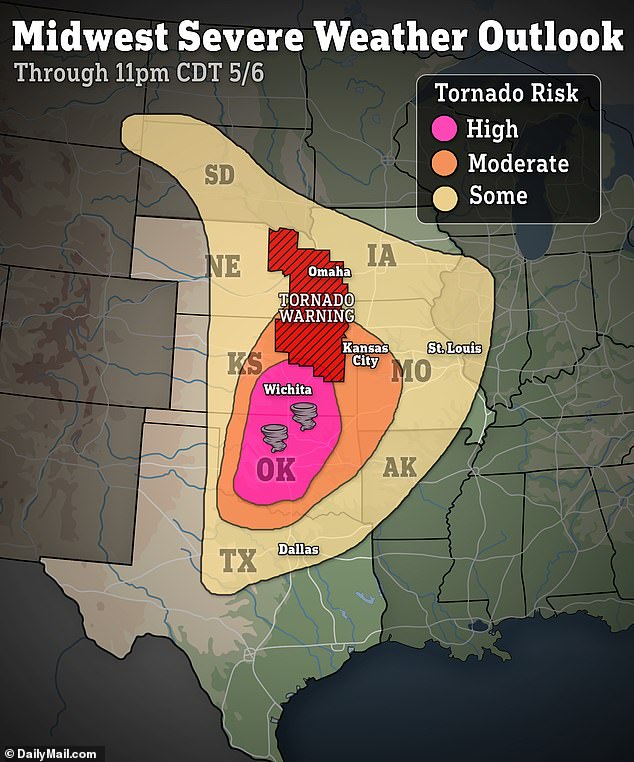Tornadoes touched down in Oklahoma while 1,100 flights were delayed in Denver and military bases were evacuated in the latest round of storms to hit the Midwest.
The National Weather Service’s Storm Prediction Center issued a tornado watch for parts of southern Kansas, western and central Oklahoma and western North Texas on Monday afternoon, in effect until 11 p.m.
Hail and strong winds, including isolated gusts at speeds up to 75 mph, were anticipated to affect more than 3.4 million people.
Colorado felt the storm as it moved across the state Monday night, forcing airlines to delay or cancel more than 1,100 flights at Denver International Airport.
In the evening, tornadoes were reported in Oklahoma with social media posts showing funnel clouds near Perry.
The National Weather Service issued a tornado watch for parts of southern Kansas, western and central Oklahoma and western North Texas until 11 p.m.
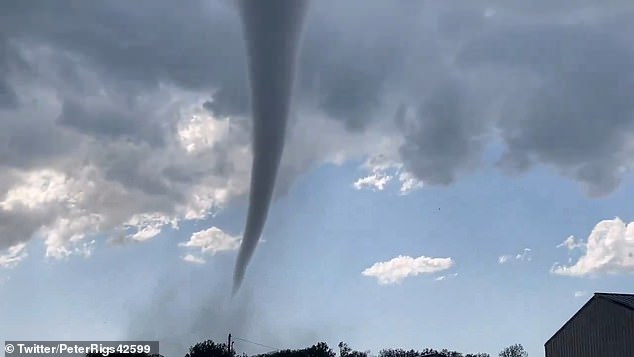
A funnel was seen in Westmoreland, Kansas, on Monday night.
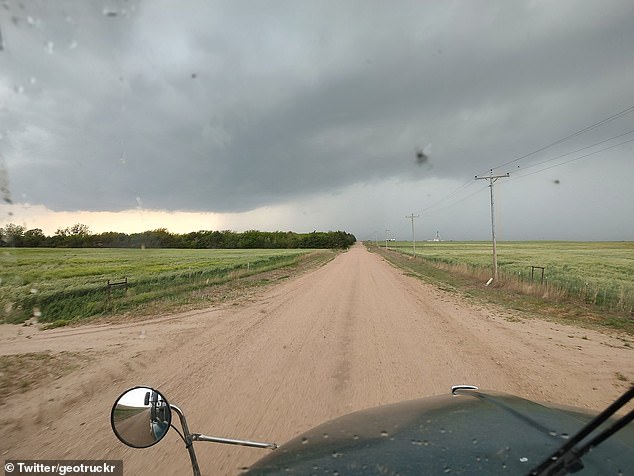
Dark clouds settled over Texas, where the National Weather Service expects large hail and isolated gusts at speeds up to 75 mph.
In the city of just over 5,000 residents, power lines were snapped, trees were uprooted and at least one structure was damaged, according to KFOR.
Destroyed trees and buildings were reported near the Garfield County line with Kingfisher County in Oklahoma.
“The supercells are expected to shoot from western Oklahoma to western Kansas before moving eastward overnight.” AccuWeather Senior Meteorologist Tyler Roys warned. “These storms are likely to contain not only some tornadoes, but also giant, damaging hail.”
As heavy rain and high winds battered the state, schools and universities, including the University of Oklahoma and Oklahoma City Public Schools, canceled afternoon and evening activities.
According to the National Weather Service, more than 1,600 schools and 159 hospitals in the state face the most severe tornado threat.
The storm is expected to head northeast overnight and cause more damage in the Illinois and Indiana region.
Earlier in the day, storms made their impacts felt in Colorado and Kansas.
Strong gusts of 45 mph brought down small planes at Centennial Airport in Englewood, about seven miles from Denver.
More than 1,100 flights were delayed in Denver. Inbound flights were delayed an average of one hour and 18 minutes, while outbound flights were delayed an average of one hour and four minutes, according to data from FlightAware.
On Monday morning, McConnell Air Force Base in Wichita, Kansas, moved several of its aircraft to other bases to protect them from damage. The forecast in the region calls for the possibility of damaging winds between 70 and 80 mph.
The Air Force sent McConnell’s KC-135R Stratotanker and KC-46A Pegasus aircraft to military bases outside the local area. The remaining ships that were undergoing maintenance were hidden in hangars.
This marked the third time in four weeks that McConnell’s planes have been moved due to inclement weather.
Hail three inches wide, about the size of an apple, was reported near the city of Ellinwood, 100 miles northwest of Wichita.
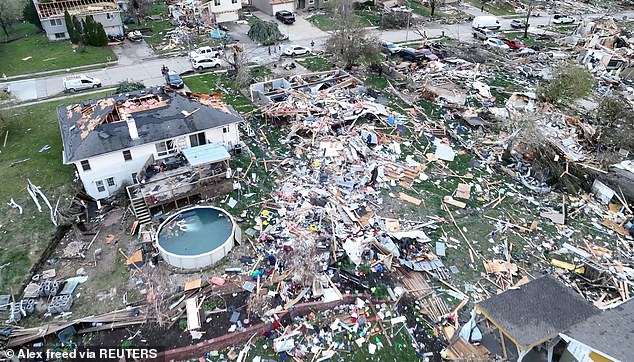
A drone view shows people inspecting the site of damaged buildings after a tornado in Omaha, Nebraska, on April 26.
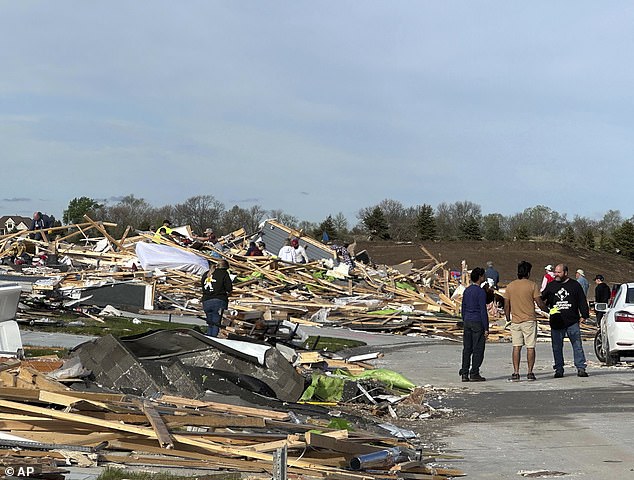
Homes were razed across the state, including in Elkhorn, a suburb of Omaha.
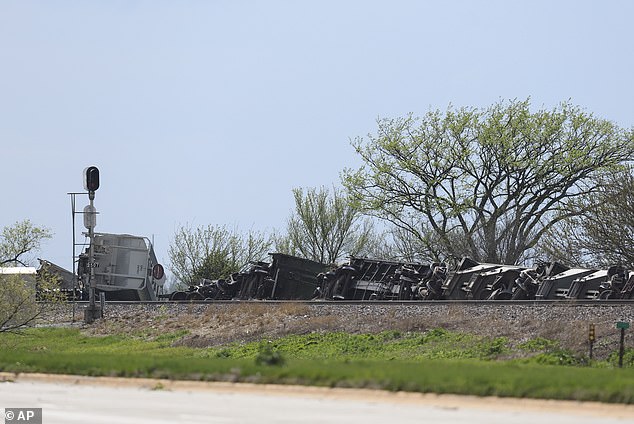
BNSF train cars derailed along U.S. Route 6 after a tornado ripped through the area between Waverly and Lincoln.
This week’s treacherous weather comes on the heels of another storm system that carved a path of destruction across Texas. A funnel was seen west of Anson on the afternoon of May 3. before moving southeast toward Truby and the community of Hodges and Hawley, a city in Jones County.
The tornado then tracked toward Abilene, about 180 miles west of the Dallas-Fort Worth Airport, leaving shattered trees and downed power lines in its wake. Around 7:20 p.m., the tornado touched down in Tye along with baseball-sized hail.
And starting on April 26, dozens of tornadoes leveled buildings and caused blackouts in Nebraska, Iowa and Oklahoma.
Four deaths were reported in Oklahoma, including a four-month-old baby. cities like Sulfur and Holdenville were the hardest hit, accounting for three of the five deaths.
NWS research teams reported damage consistent with an EF-3 tornado in the region, characterized by damaging gusts between 136 and 165 mph.
In Nebraska, hundreds of homes were razed, ripped off their foundations or had their roofs torn off.
The first tornado struck Elkhorn around 4 p.m. on April 26, leveling at least six newly built homes and damaging dozens more.
The violent winds even overturned BNSF train cars along Route 6 between Waverly and Lincoln.
One more victim was reported Saturday in Minden, Iowa, bringing the death count to five.
The unnamed man was fatally injured when she became trapped in her basement while a tornado raged overhead.

